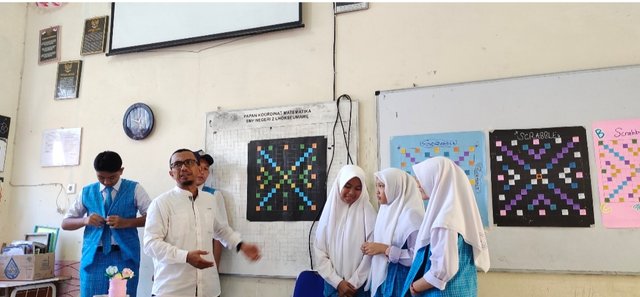
Teaching Scrabble
Hello Steemian friends. Hello teacher and english learner.
This is my very first post in the Teacher and Students Community, so let me start with a short introduction. My name is Muhammad Iqbal, but my students usually call me Sir Iqbal. I am an English teacher at a junior high school in Lhokseumawe, Aceh, Indonesia. Besides teaching in class, I also love experimenting with creative ways to make English more fun and meaningful for my students.
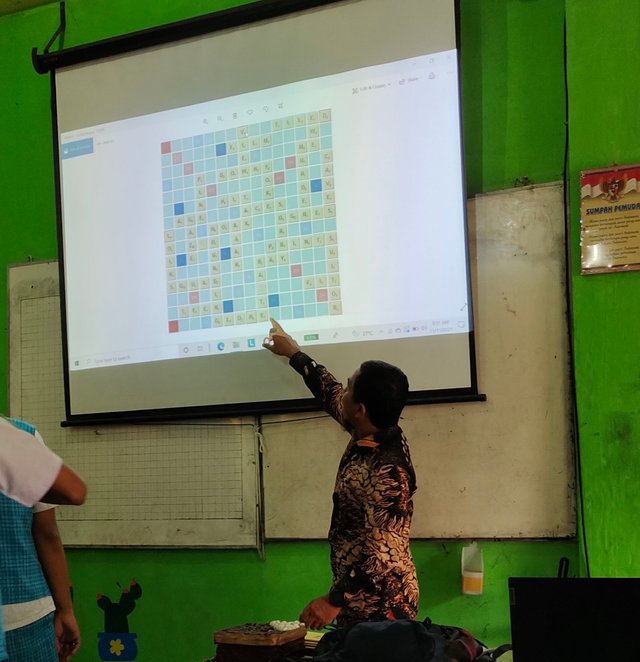
Teacher is showing scrabble on screen
Most of my students come from village backgrounds, simple kids with big dreams. They don’t always have access to modern learning facilities, but that never stops us from trying new things together. I believe learning English should not be scary or boring. Instead, it should be full of joy, games, and creativity. That’s why I often try to “break the rule” by bringing unusual activities into the classroom.
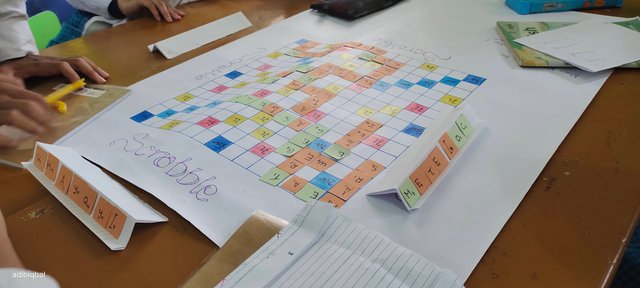 Scrabble made by village students
Scrabble made by village students
Today, I want to share one of those moments: when I taught my village students to build an international game , Scrabble, using nothing but cardboard and orange paper.
Teaching is never only about textbooks. Sometimes, it’s about turning something very simple into a meaningful learning journey. That’s exactly what happened when I introduced Scrabble , a world-class board game to my students in a small village school. The twist? We didn’t use the expensive original board. Instead, we built our very own Scrabble set using just cardboard and orange paper.
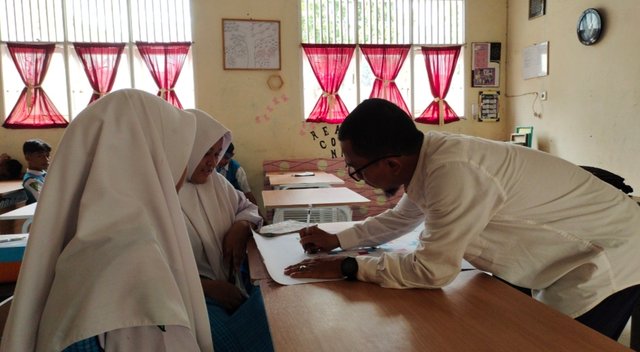
I explain the rules
At first, my students were surprised. They never expected to “create” a game that is played internationally. But that was the point: to show them that learning English can cross boundaries, even if we are in the village. More importantly, I connected this activity with our lesson on procedure text. The making process itself became the material.
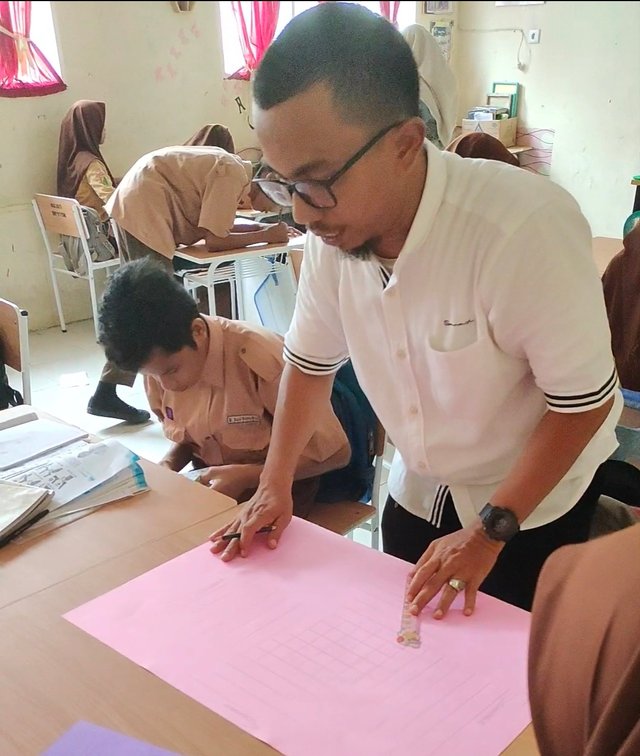 Teacher is a facilitator
Teacher is a facilitator
Teaching Procedure Text through Carton paper Scrabble Board
In teaching procedure text, we usually emphasize structure: Goal – Materials – Steps. But rather than only reading examples from the book, I wanted my students to experience it directly.
Goal: “To make a Scrabble board and letter tiles from simple materials.”
Materials:
•1 large piece of cardboard (at least 50 × 50 cm)
•Orange paper (for tiles)
•Ruler, scissors, marker, glue
•A small box to store the tiles
Steps:
1.First, draw a 15 × 15 grid on the cardboard (225 squares in total). Each square should be about 3–4 cm. Mark the center square with a star.
 Drawing 15 x 15 grid on the cardboard
Drawing 15 x 15 grid on the cardboard
2.Next, cut the orange paper into 100 small squares for letter tiles.
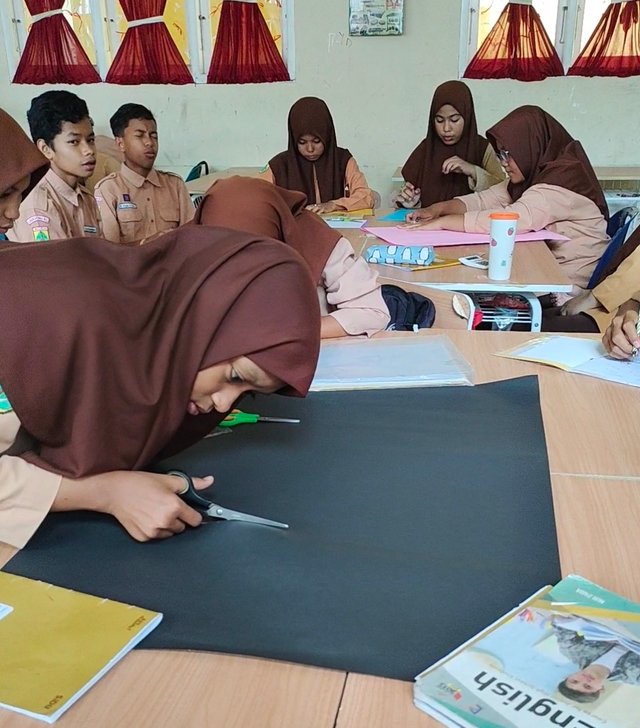
Student cutting the paper
3.Then, write letters on each tile, following the Scrabble distribution (A–Z). Add the point value at the bottom-right corner of each tile.
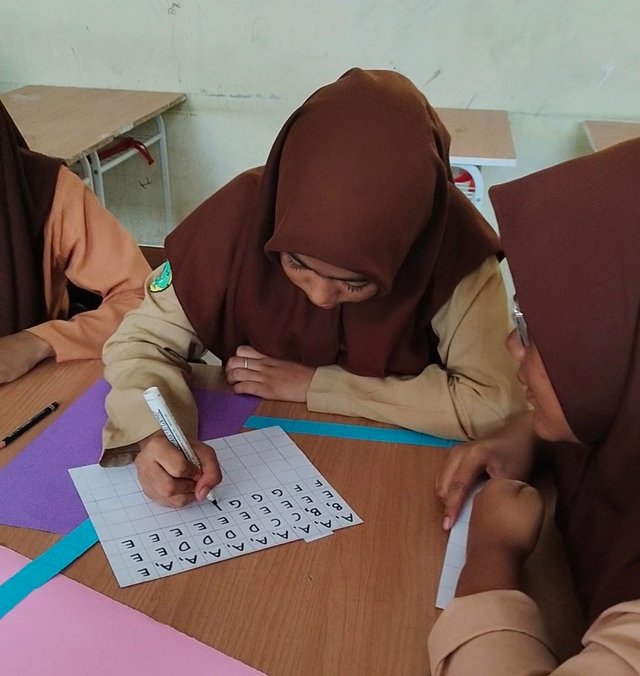 Writing letters
Writing letters
4.After that, put all the tiles into the box and shuffle them.
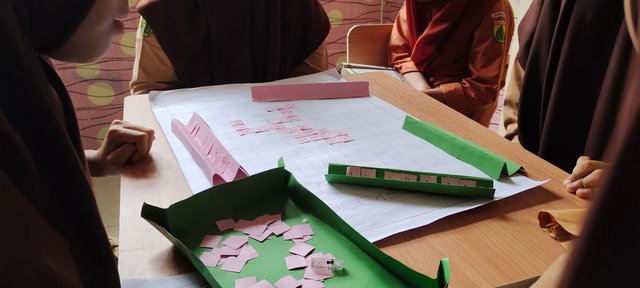
putting all the tiles and ready to play
5.Finally, explain the rules: each player draws 7 tiles, takes turns forming words, and scores points based on the letters used.
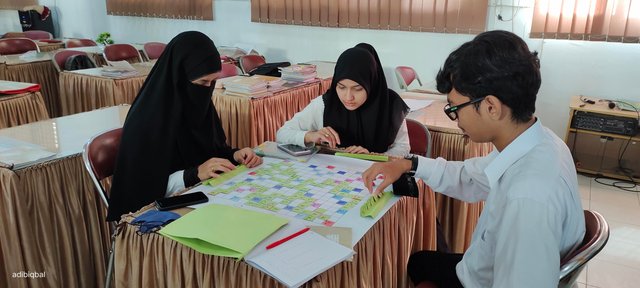 Training Teachers are practising the game
Training Teachers are practising the game
By following these steps, students not only practiced the procedure text language with imperatives like cut, draw, write, glue but also engaged in teamwork, problem-solving, and creativity.
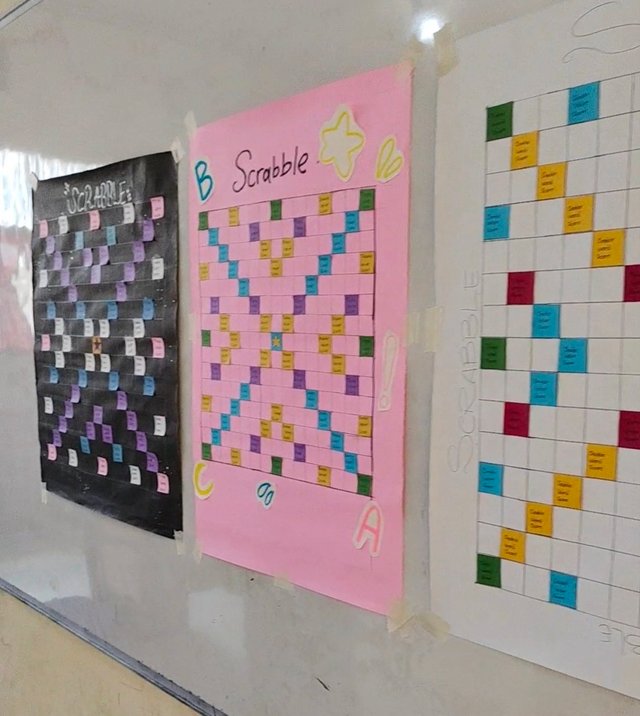 Scrabble made by the students
Scrabble made by the students
 The students are keen to play
The students are keen to play
What surprised me most was the reaction of the so-called lazy students and troublemakers. Usually, they would sit at the back with no interest. But when they saw their friends busy making the board and arranging the letters, they got curious. “Sir, can we try?” they asked. From that moment, they started to join, laugh, and play with English words. Step by step, their curiosity turned into excitement.
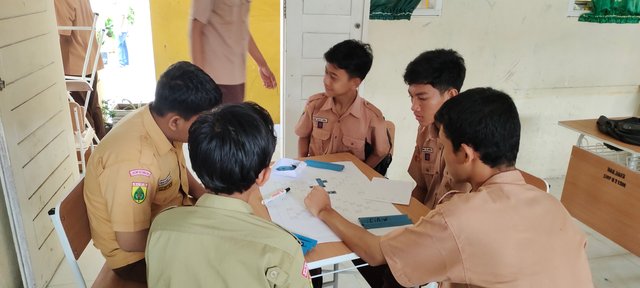 The students learn to think and try
The students learn to think and try
The most beautiful part was seeing their excitement. Students who were usually shy suddenly became active and curious to learn english.
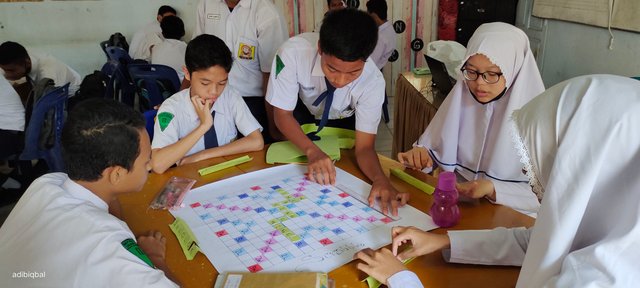
They build teamwork and strategy.
They argued, laughed, and worked together to build something with their own hands. For them, Scrabble was not just a new game. it was proof that “Village kids” could touch international standards with their creativity.
*
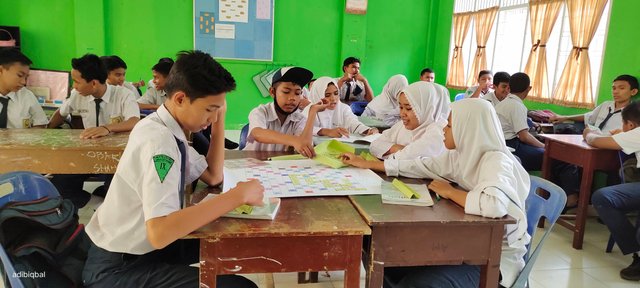
They improve their vocabulary
For me as a teacher, it was a reminder: learning does not always require expensive resources. Sometimes, the power lies in imagination, courage, and community spirit. Teaching procedure text through this creative Scrabble board game became more than grammar. it was about building confidence and global connection.
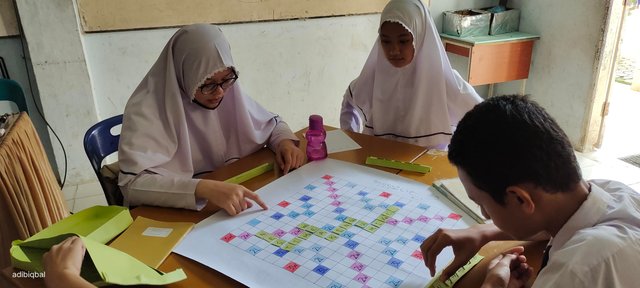
They build confident to use english word
For me, this was a powerful moment. By connecting the lesson (Procedure Text) with something creative and international (Scrabble), my students—though from a village background—were able to experience a world-class game while practicing their English. It proved that with a bit of creativity, even simple classrooms can bring global learning experiences.
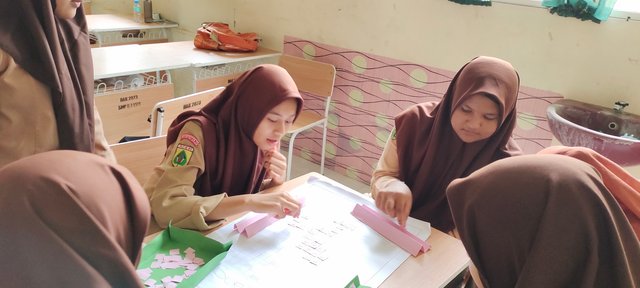
They learn english fun and happily
This is why I love being part of the Teachers and Students community. Here, I can share my little teaching stories, and hopefully inspire other teachers and learners out there. Because education is not only about delivering knowledge, but also about sparking curiosity and joy.
Lets have fun with english....

Best Regards @ubayiqbal




 Drawing 15 x 15 grid on the cardboard
Drawing 15 x 15 grid on the cardboard
 Writing letters
Writing letters
 Training Teachers are practising the game
Training Teachers are practising the game








Upvoted! Thank you for supporting witness @jswit.